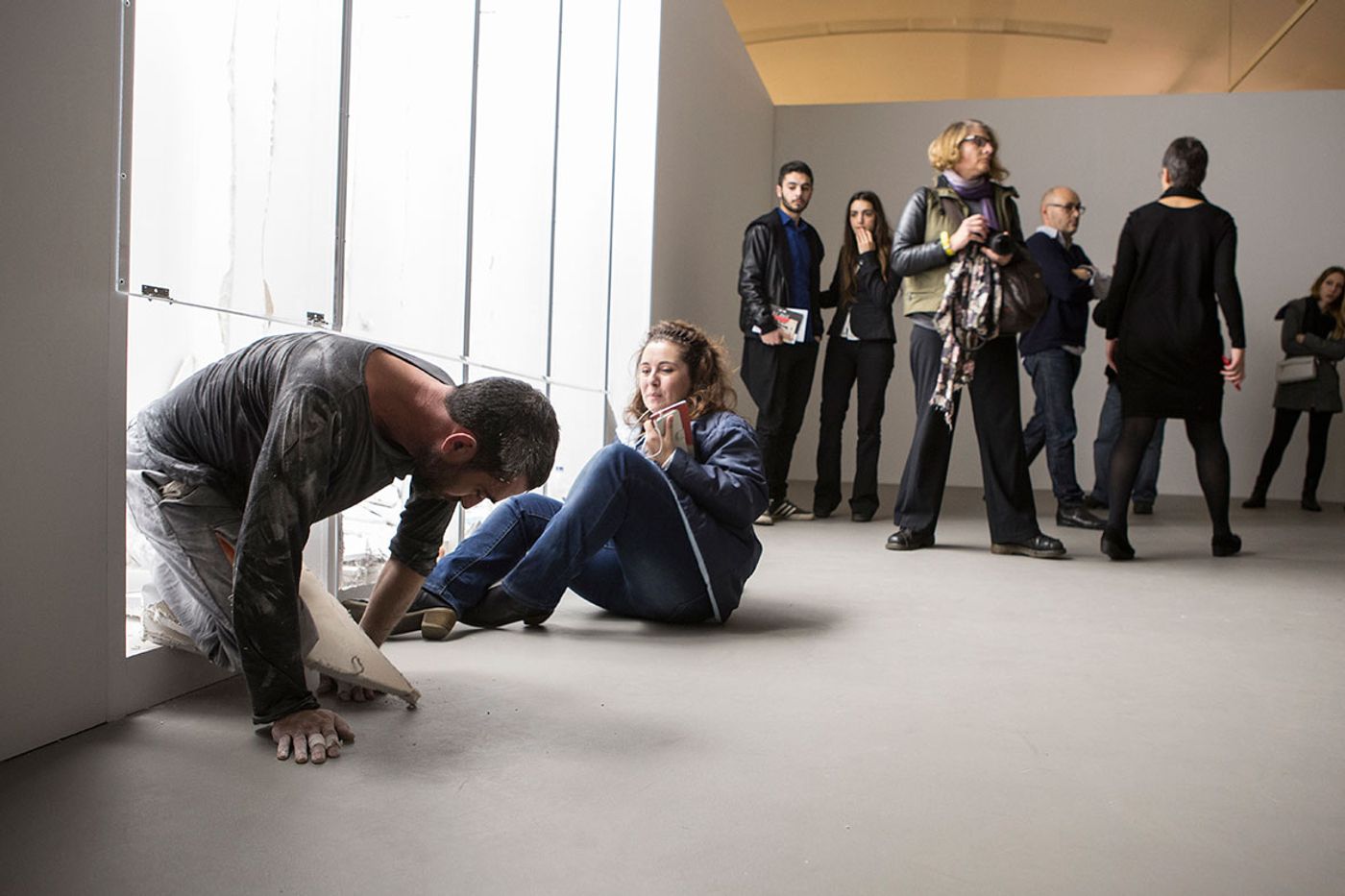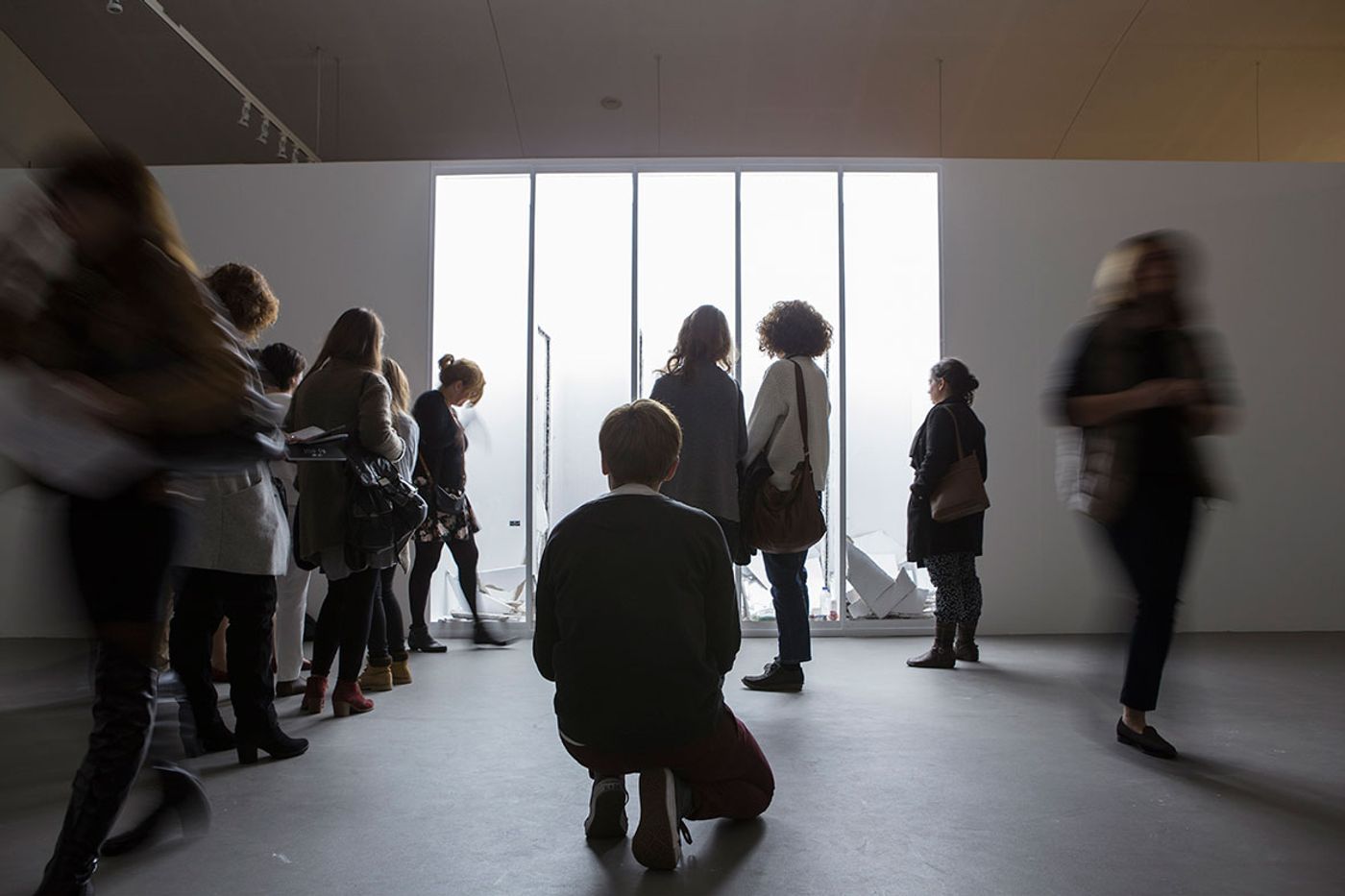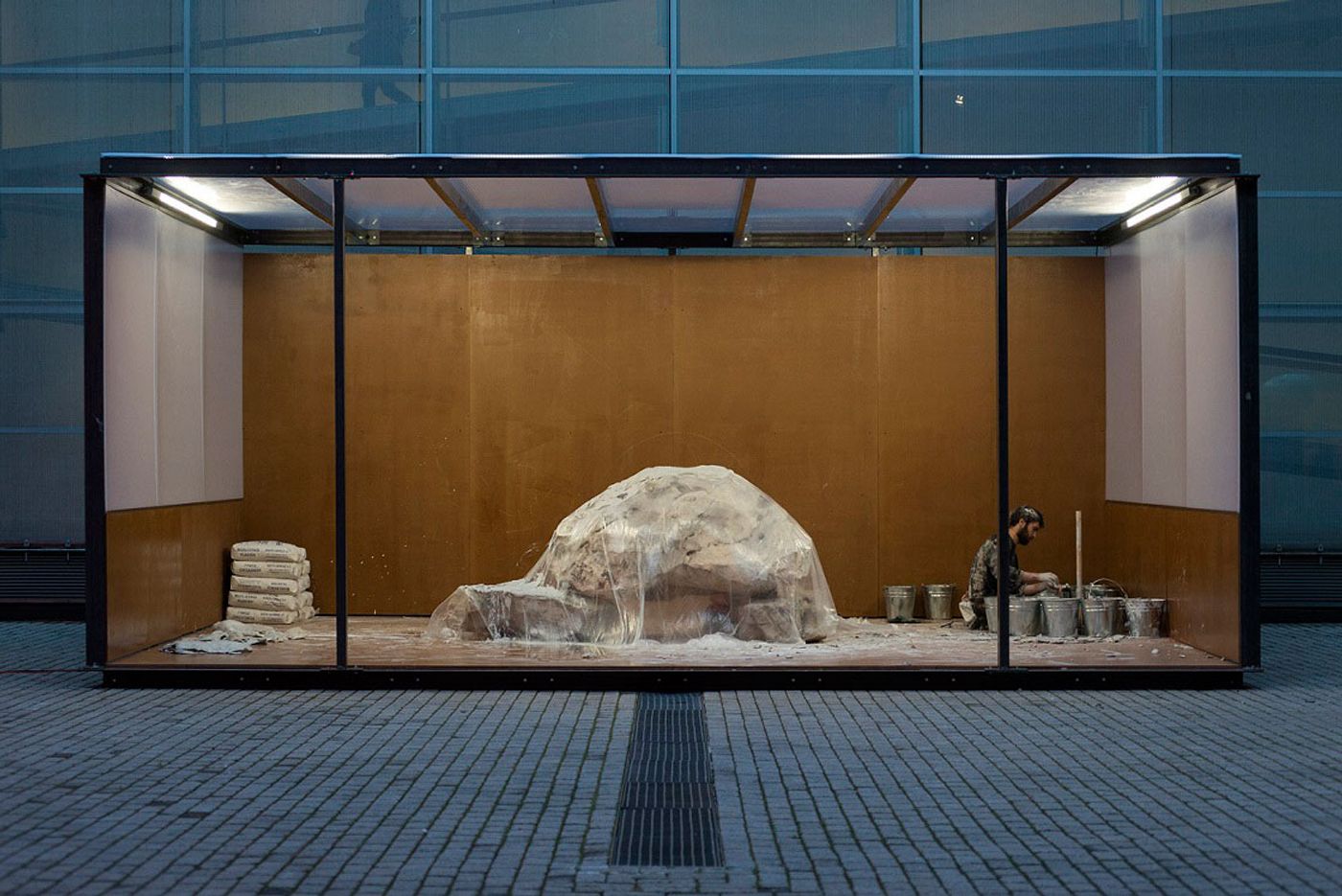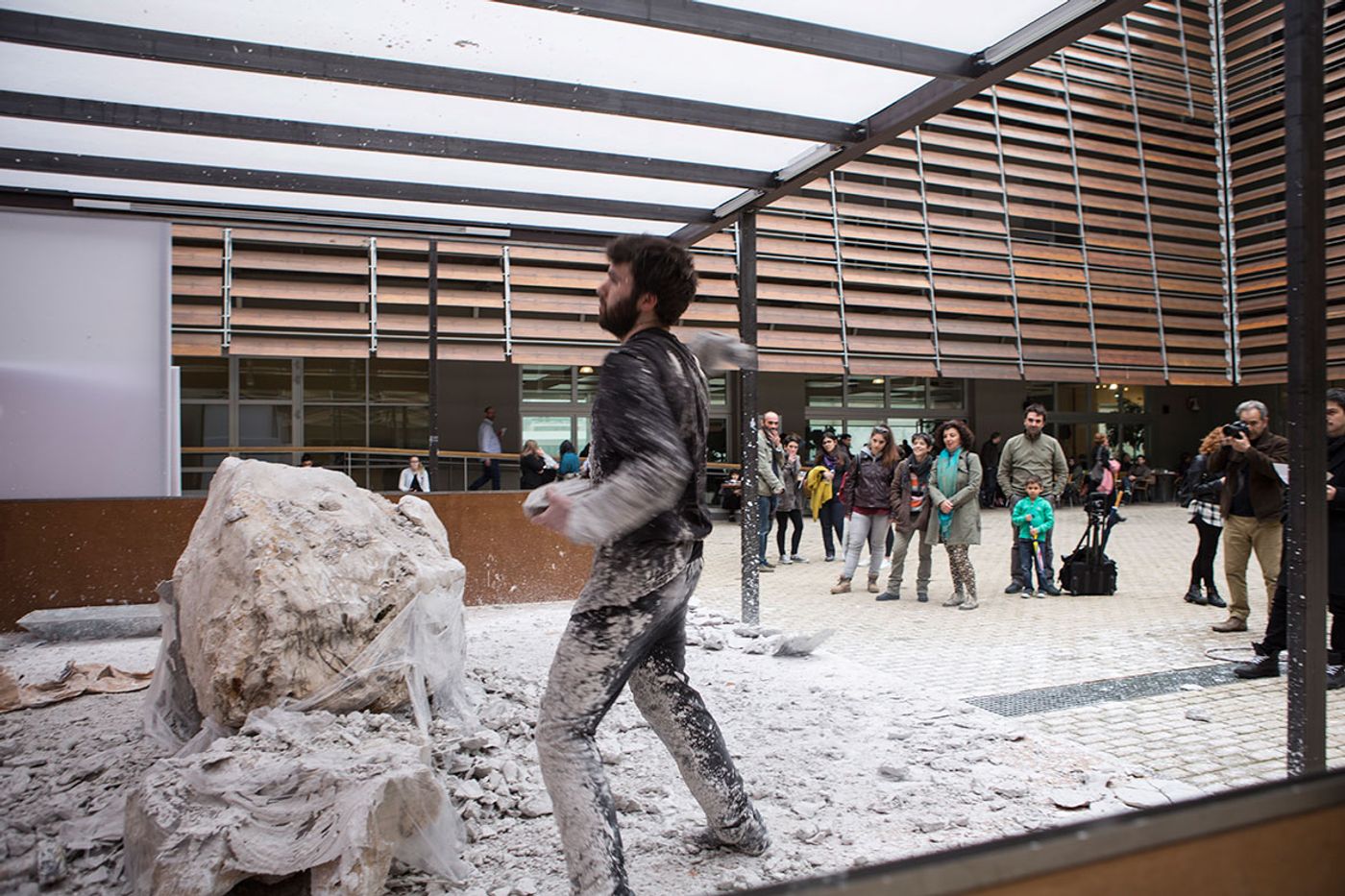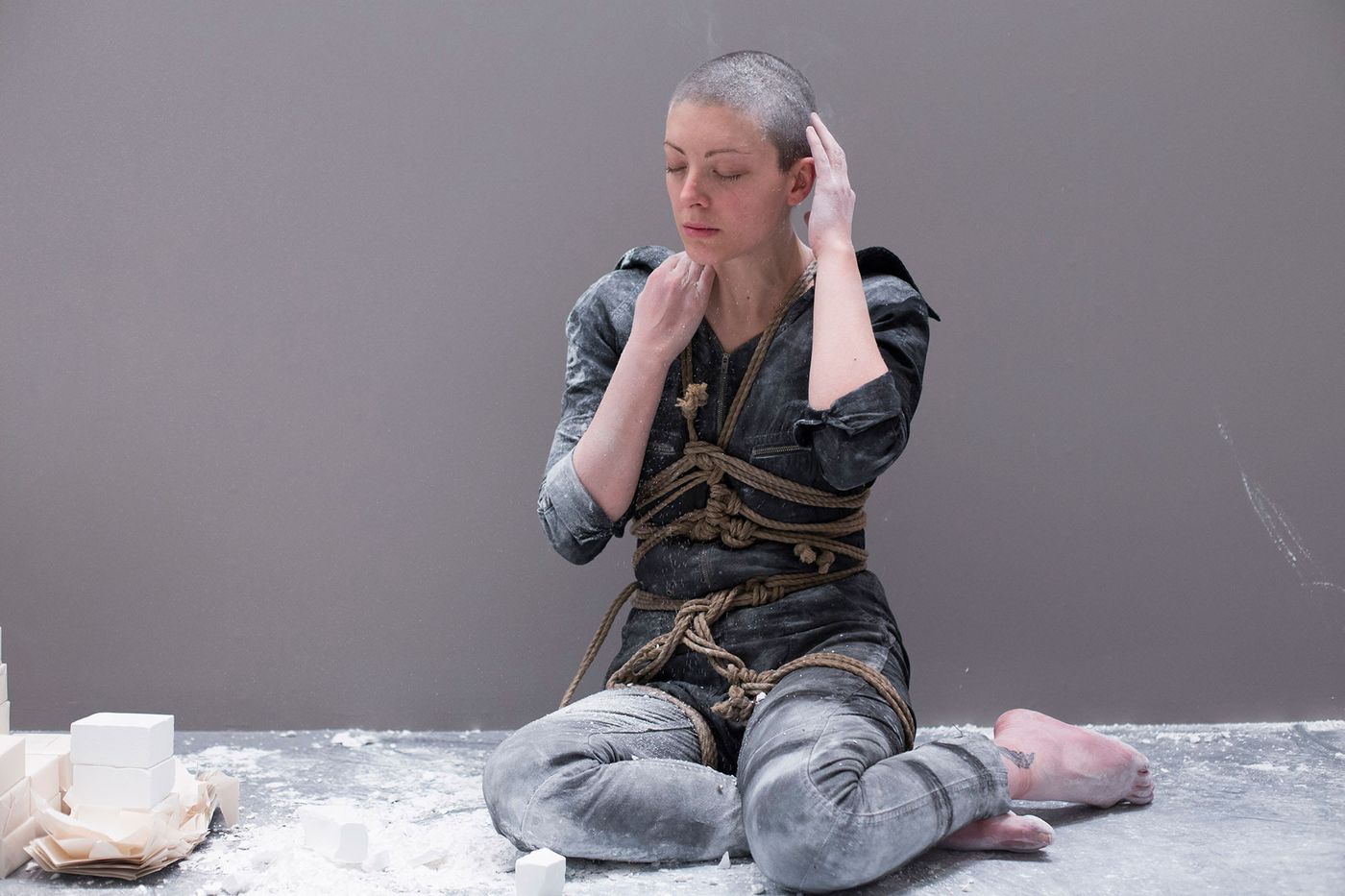
Humanity AS ONE at the Benaki Museum in Athens
Words by Eric David
Location
Athens, Greece
Athens, Greece
Location
A collaboration between NEON and the Marina Abramović Institute (MAI), “As One” at the Benaki Museum in Athens was conceived as an exposition of performance art that aims to introduce the Greek public to a wide range of Greek and international artists as well as the process of performance itself through the Abramović Method. The Method, conceived and developed by self-proclaimed "grandmother of performance art" Marina Abramović, draws from her own experiences over the course of 40 years, and seeks to connect us with our own selves and those around us —but in this case also functions as an excellent introduction to the discipline of performance art. By interchangeably taking the role of both spectator and participant, visitors get to experience this art-form from the inside out.

Marina Abramovic addressing the audience at the opening of AS ONE. Photo by Panos Kokkinias.
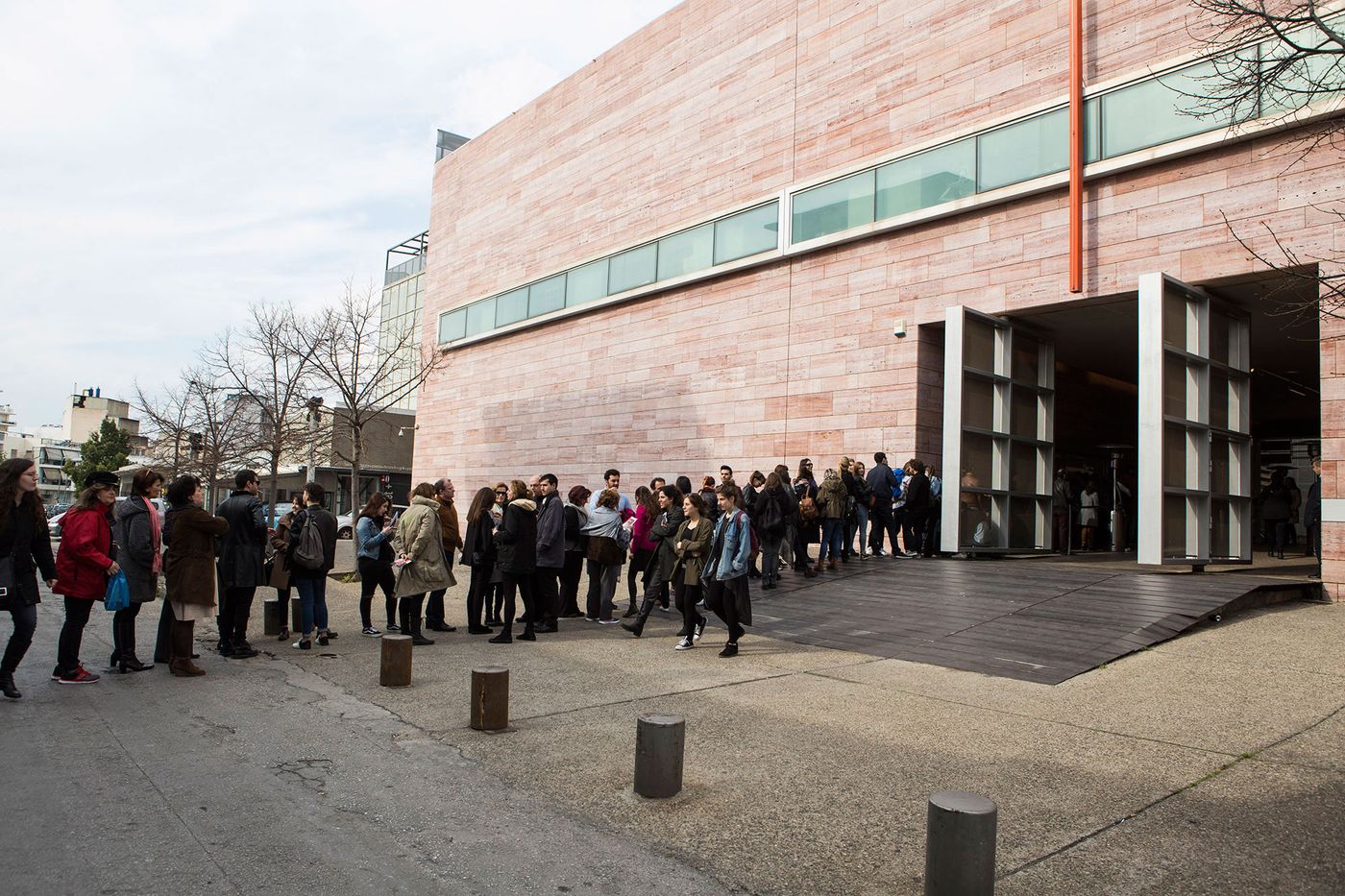
Exterior view of the Benaki Museum - Piraeus Str. Annexe. Photo © Natalia Tsoukalas.
As in Abramović’s previous participatory projects, (like for example “512 Hours”, her 2014 residency at the Serpentine Gallery in London), you are asked to leave behind all personal belongings and invited to go through three types of warm-up exercises. With the help of facilitators trained by Marina Abramović’s associate Lynsey Peisinger, these exercises aim to stimulate the senses, stretch out the body and regulate breathing. The collective aspect of these routines is also a fitting preamble for what comes next. Upon entering the main communal space, you are overwhelmed by the sight of people engaged in complete silence in several lethargic activities throughout the space: all participants are obliged to wear sound-cancelling headphones while in this area and talking is not allowed. Comprising of individual and collective participatory experiences that you are free to join for as long as you like, the activities that are part of the Method are basically exercises in endurance-training originally developed by Abramović as a preparation for performing long-durational works. The layout of this area, as well as the design of the exhibition upstairs, is by Katerina Apostolou and Minna Colakis of AK-A Architects.
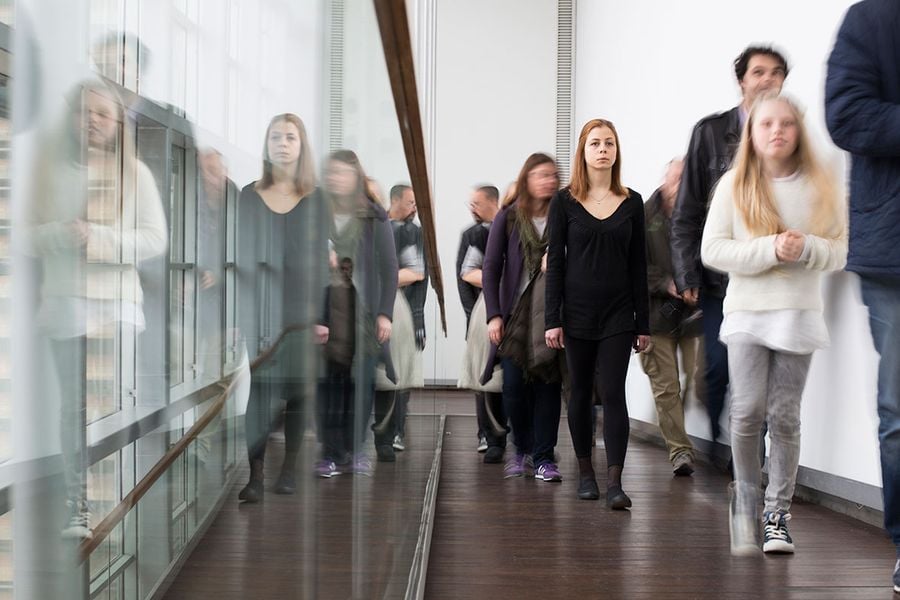
An AS ONE "facilitator" performing "slow walking" on the Benaki Museum ramp. Photo © Natalia Tsoukalas.
Some exercises, like standing still with your eyes shut on a low-rise platform or laying on a bed under the covers, bestow a serenity seldom experienced in our daily routines. Others, such as walking in slow motion or separating and counting grains of rice and lentils, demand extraordinary concentration but once accustomed to their rhythm they reward you with a heightened sense of being present. One of the most intriguing drills is a take on “The Artist Is Present” (Abramović’s 2010 performance at MoMA where she sat immobile while spectators were invited to take turns sitting opposite her), where you are invited to sit across a stranger and stare into each other’s eyes, an experience that turns from awkward to intense to serene. In yet another unnerving experience, you are blindfolded and left to reluctantly pace the space with touch as your only guide.

Visual artist Thodoris Trambas performing "Pangaea", his six-week-long performance at the courtyard of the Benaki Museum. Part of AS ONE, 2016. Photo © Natalia Tsoukalas.
Having experienced the Method, you then approach the performances that are happening on the museum’s second floor and in the atrium, now armed with a much better appreciation of the artists’ determination. In all, 29 Greek and international artists participate in 27 performances, the former selected by Abramović and her associates Serge Le Borgne and Paula Garcia following an open call. Six of the performances are long-durational, extending for the whole duration of the project while the remainder, billed as “performance interventions”, are scheduled throughout the exposition and last from one to 6 days.
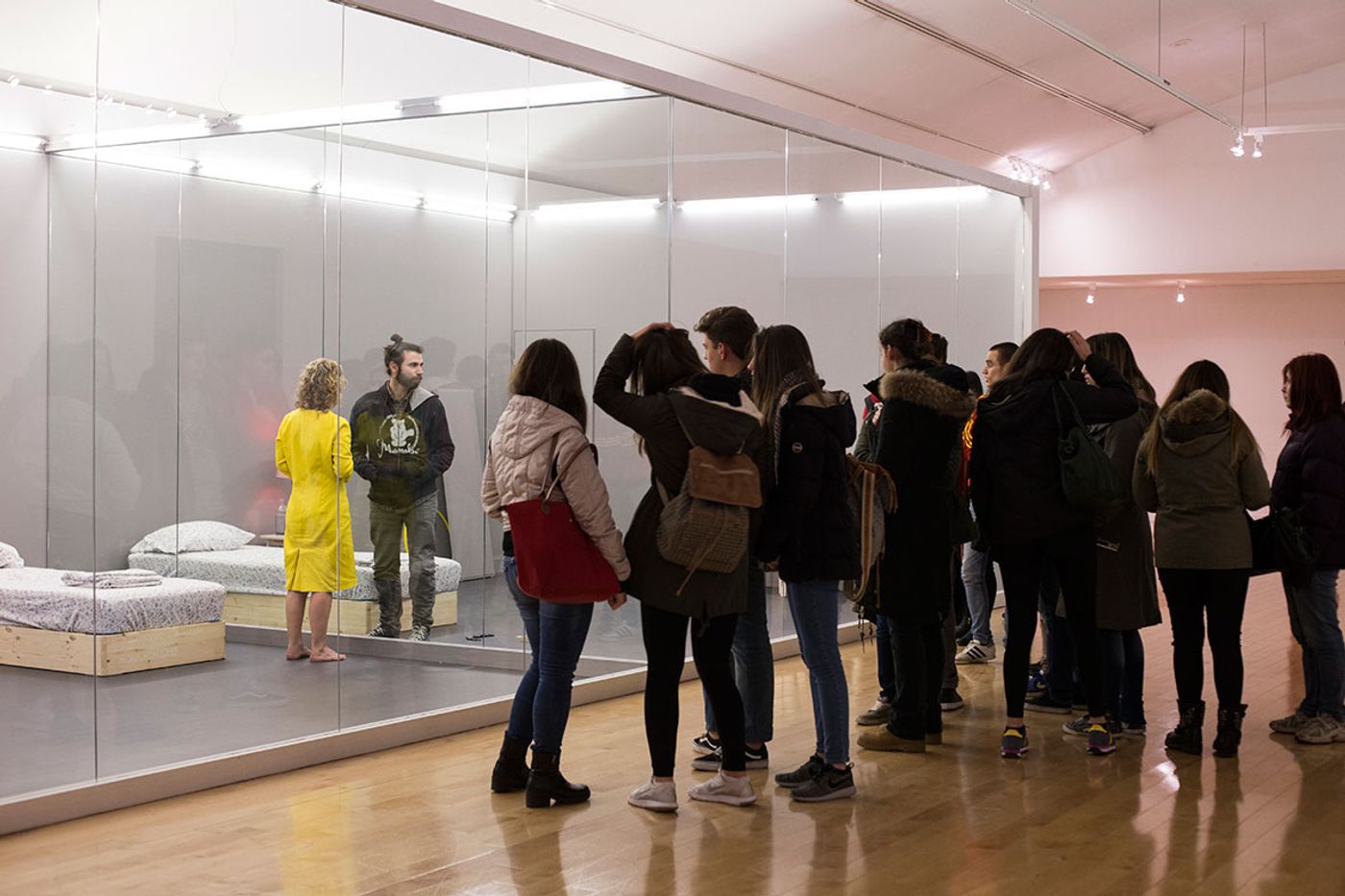
Audience and a perplexed participant inside the double glass room of actress Yiota Argyropoulou, the setting of her six-week-long performance "A person at a time". Part of AS ONE at the Benaki Museum, Athens, 2016. Photo © Natalia Tsoukalas.

Yiota Argyropoulou, "A Person at a Time", 2016. Six-week-long performance, part of AS ONE, at the Benaki Museum, Athens. Exhibition design by AK-A architects. Photo by Panos Kokkinias.

Nancy Stamatopoulou, "White Cave", 2016. Six-week-long performance, part of AS ONE at the Benaki Museum, Athens. Exhibition design by AK-A architects. Photo by Panos Kokkinias.

Anastasia Papatheodorou, "A Woman in a State of Truth", 2016. Performance intervention, part of AS ONE at the Benaki Museum, Athens. Photo by Panos Kokkinias.

AS ONE Performers preparing their body and mind for their six-week-long performances. Photo by Tokomburu.
Although quite different in aesthetic, tempo and disposition, all of the performances rely on the artists’ extraordinary stamina, concentration and determination. For 8 hours a day for 7 weeks Virginia Mastrogiannaki, for example, sits still and counts the seconds like a human clock (“Jargon”), while Nancy Stamatopoulou allows herself only minimal movements in the narrow confines of a camera’s field of view (“White Cave”), and Thodoris Trampas spends his days labouring in a 6 by 7-meter cell, located in the museum’s courtyard, destroying and recreating a large rock (“Pangea”). Other examples include Yota Argyropoulou who is trapped in a sparsely furnished room (“One at a time”) while visitors can enter an adjoining, identical room and interact with the artist through a glass wall, and Despina Zacharopoulou who allows visitors to enter her space where she performs a series of repetitive chores that lie between meditation and punishment (“Corner Time”). Asides from admiring their artistic integrity and dedication, watching these artists persevere against exhaustion, confinement and time makes you reassess your own attitude towards life's repetitive and unrelenting nature.
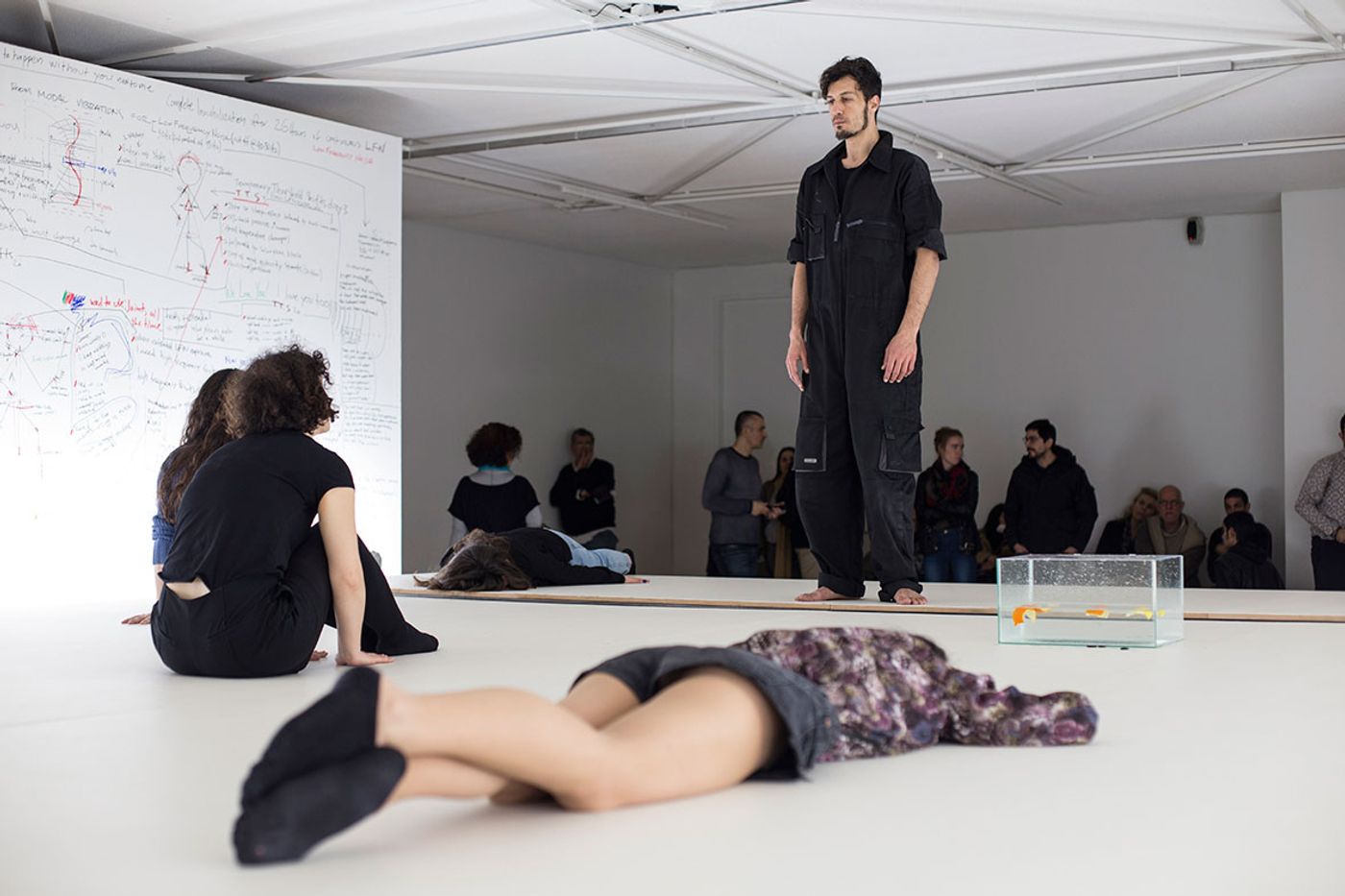
Composer and sound artist Lambros Pigounis performing "Micropolitics of Noise" in a sound installation designed by him. Part of AS ONE at the Benaki Museum, Athens, 2016. Photo © Natalia Tsoukalas.
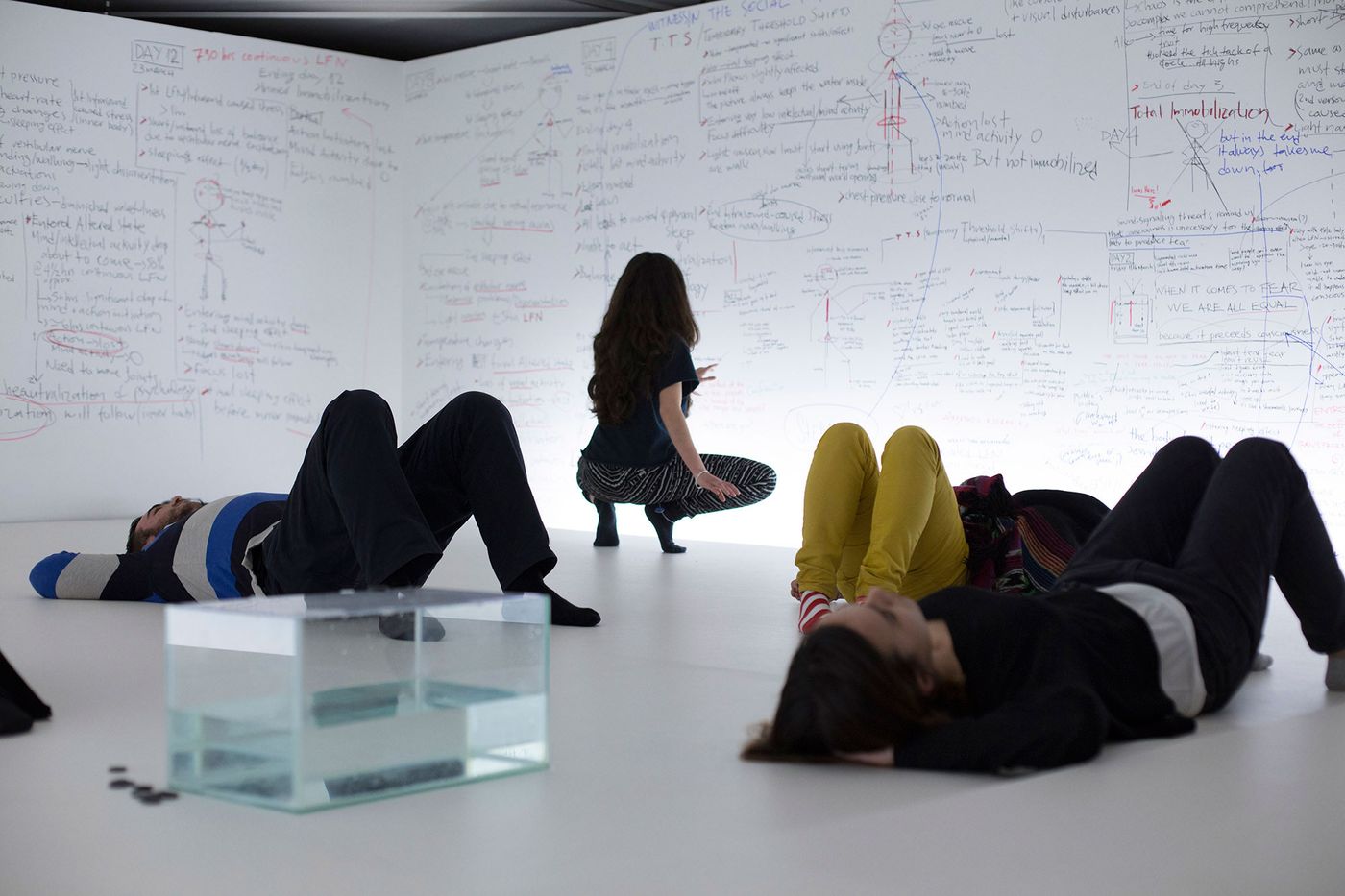
Participants experiencing a sound installation by Lambros Pigounis, installed for six weeks at the Benaki Museum, Athens. Part of AS ONE, 2016. Photo © Natalia Tsoukalas.
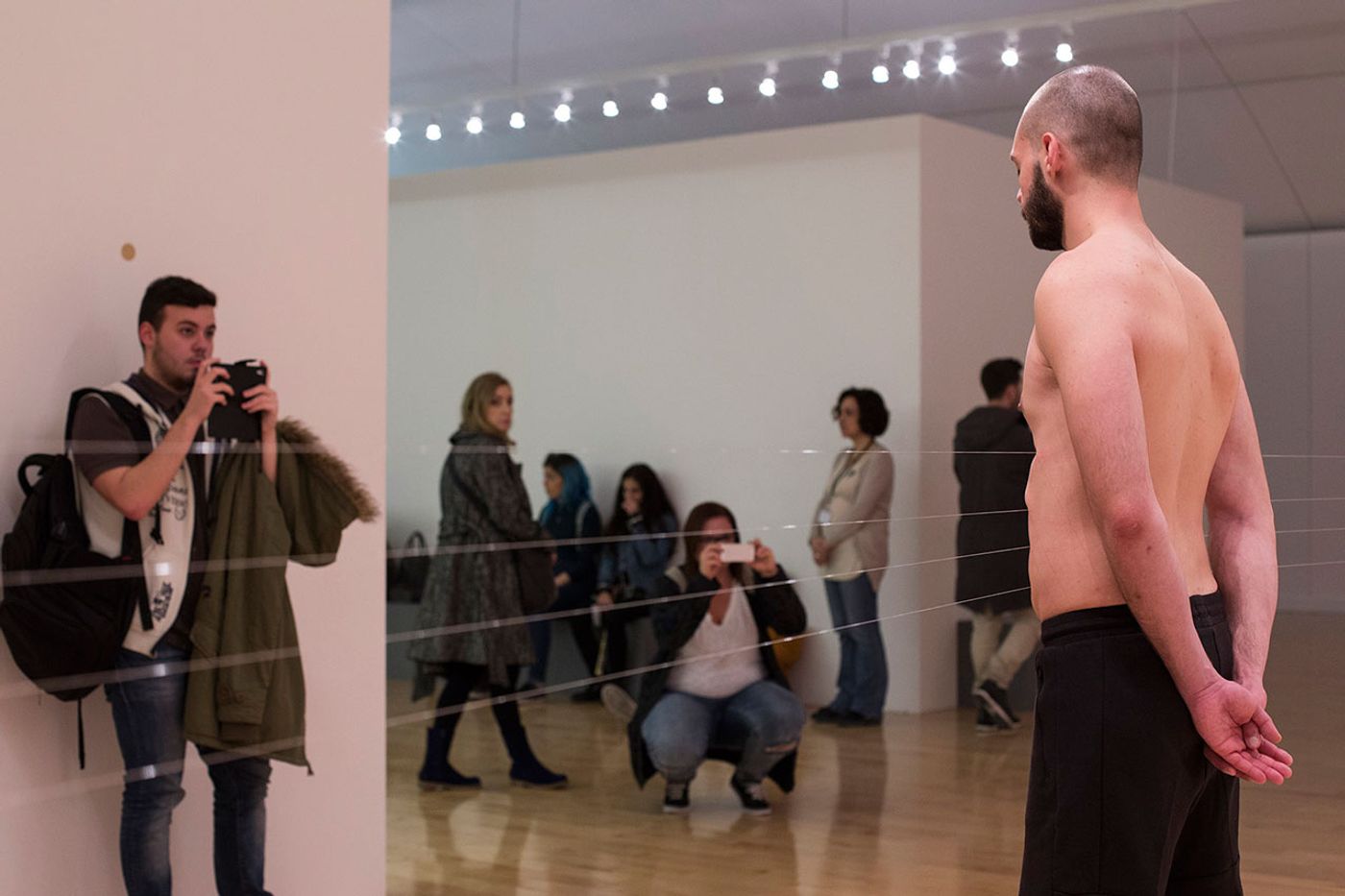
PASHIAS performing "Diagramma (Training for Performance #6)", an intervention during AS ONE at the Benaki Museum, Athens, 2016. Photo © Natalia Tsoukalas.
The exhibition programme is also complemented by two re-performances of works by Marina Abramović —“Art Must Be Beautiful, Artist Must Be Beautiful” (1975) and “Cleaning the Mirror” (1995) enacted by 7 artists— as well as educational talks, workshops and screenings that further enlighten the public about the nature of performance art. And although not all visitors will arrive at a higher level of consciousness or “find themselves” through the Method, by collectively going through its simple yet demanding tasks in muted reverie, as well as watching the exceptional perseverance of the performing artists, ultimately we become aware of our own common struggle against the passage of time, our shared humanity, and our being “as one”.
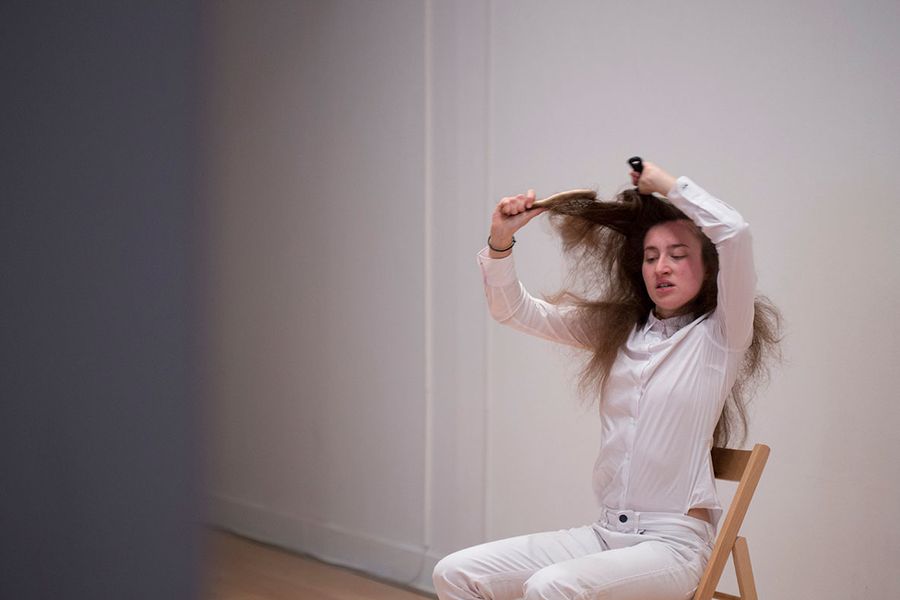
A re-performance of Marina Abramovic's 1975 work "Art must be beautiful, artist must be beautiful" by a younger artist. Photo © Natalia Tsoukalas.
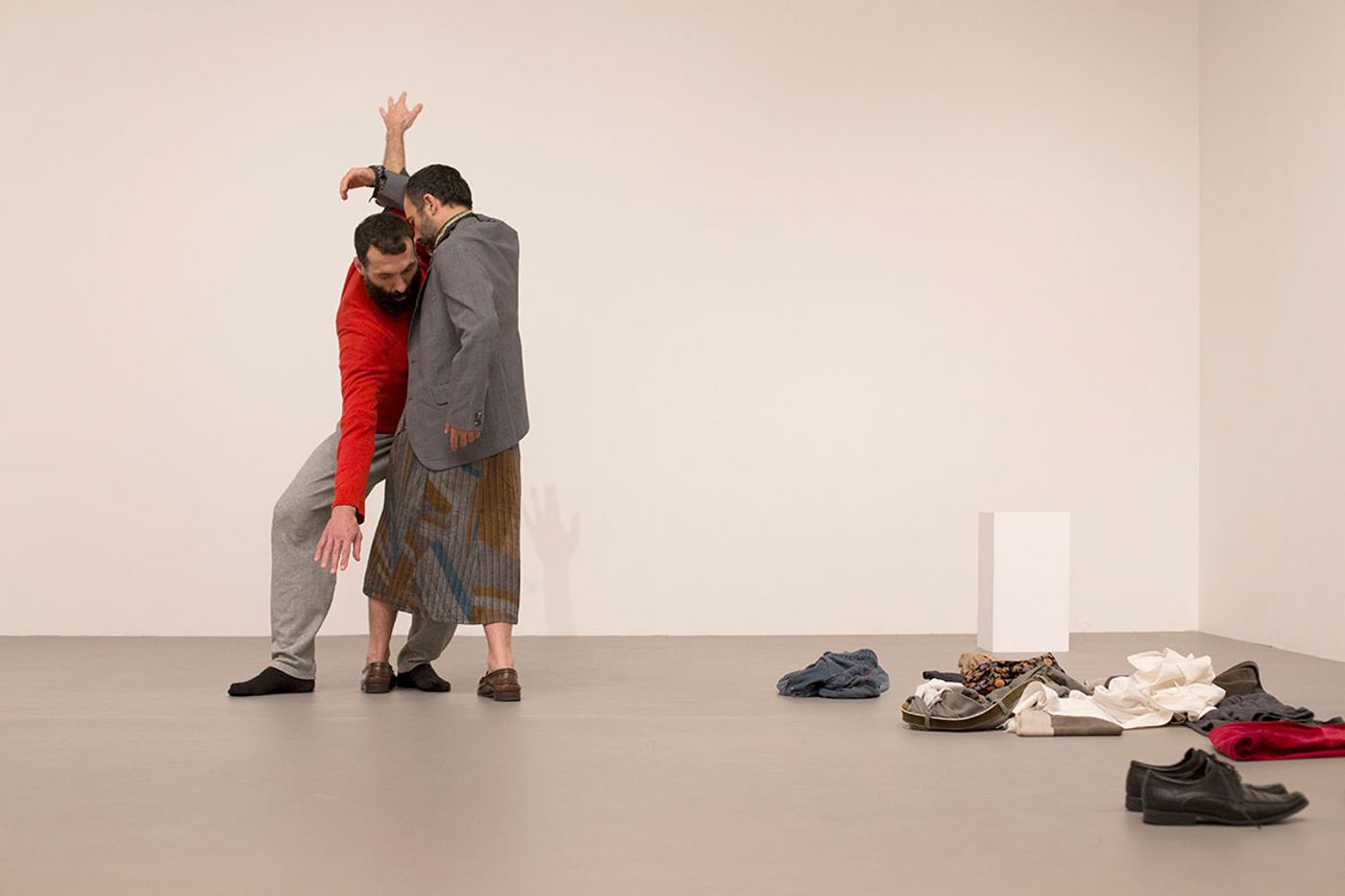
Dancers Giannis Antoniou and Stavros Apostolatos performing their intervention "The Portrait of an unknown man" during AS ONE at the Benaki Museum, Athens, 2016. Photo © Natalia Tsoukalas.

Despina Zacharopoulou performing "Corner Time". Photo © Natalia Tsoukalas.
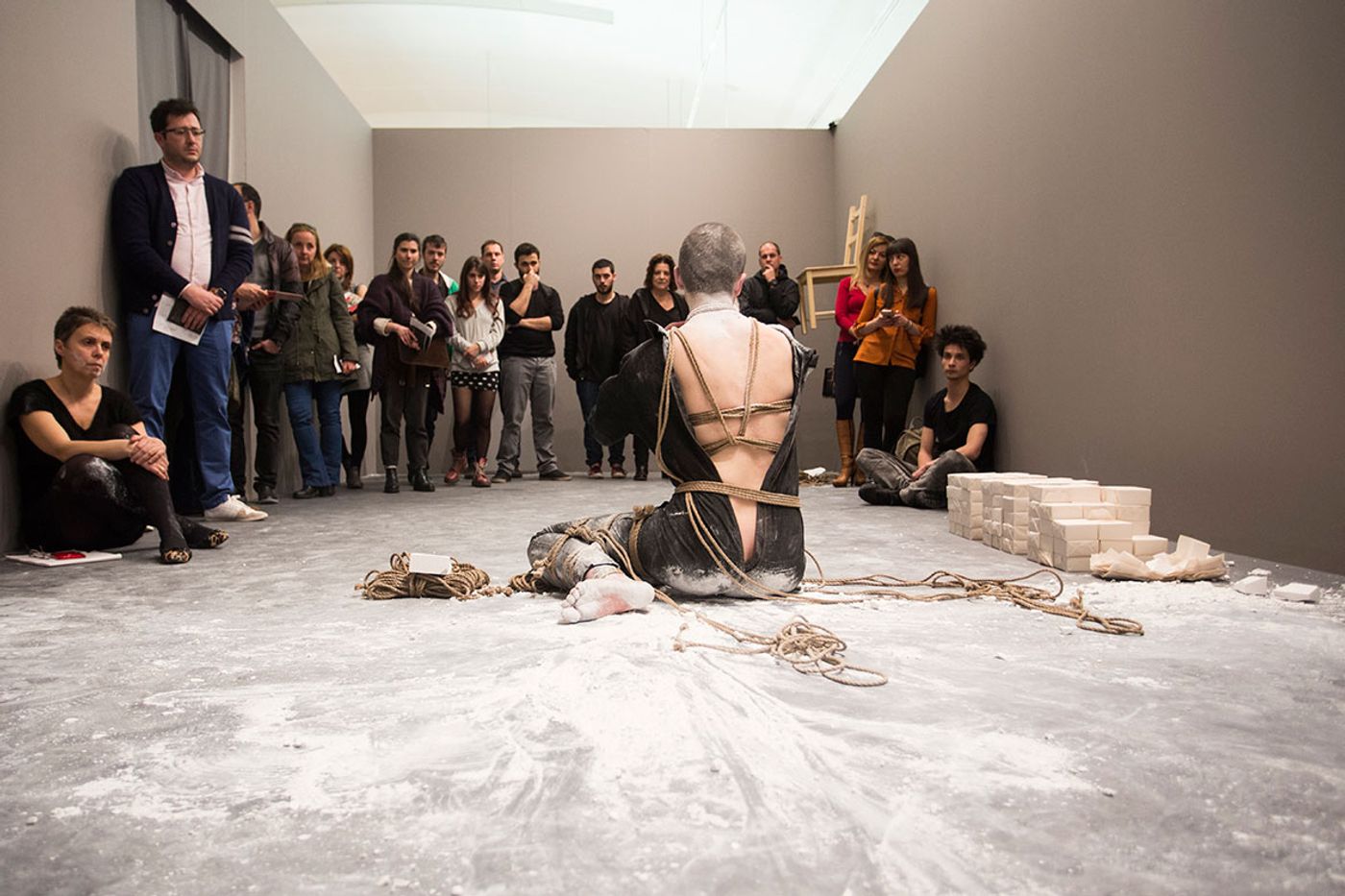
A group of visitors watch Despina Zacharopoulou perform "Corner Time". Photo © Natalia Tsoukalas.
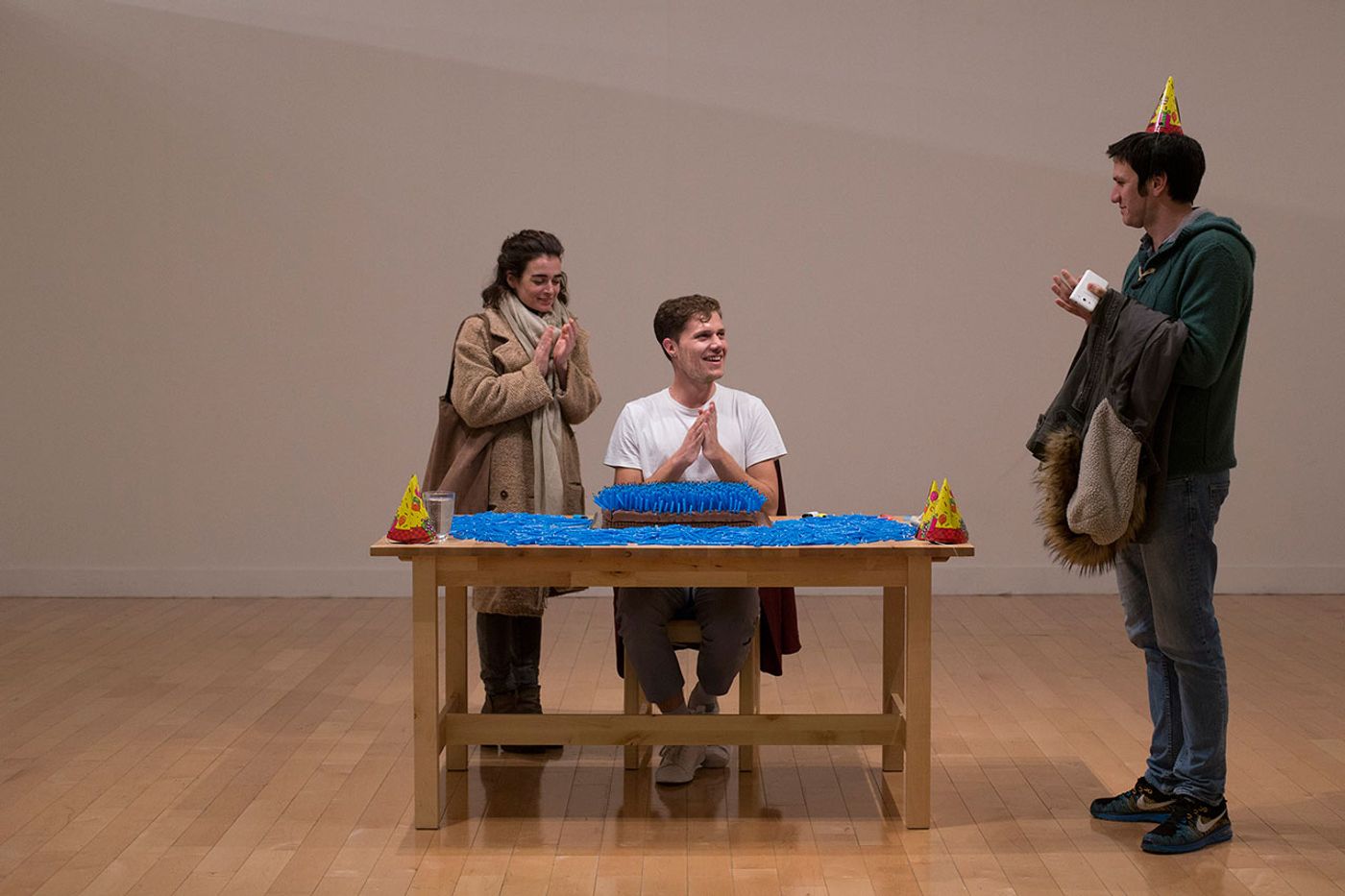
Members of the audience interact with performer Dimitris Cheimonas during his performance "Birthday". Part of AS ONE at the Benaki Museum, Athens, 2016. Photo © Natalia Tsoukalas.

Dressed in red, visual artist Virginia Mastrogiannaki performs "Jargon", where she counts the time in seconds for as long as the museum is open during AS ONE. Photo © Natalia Tsoukalas.
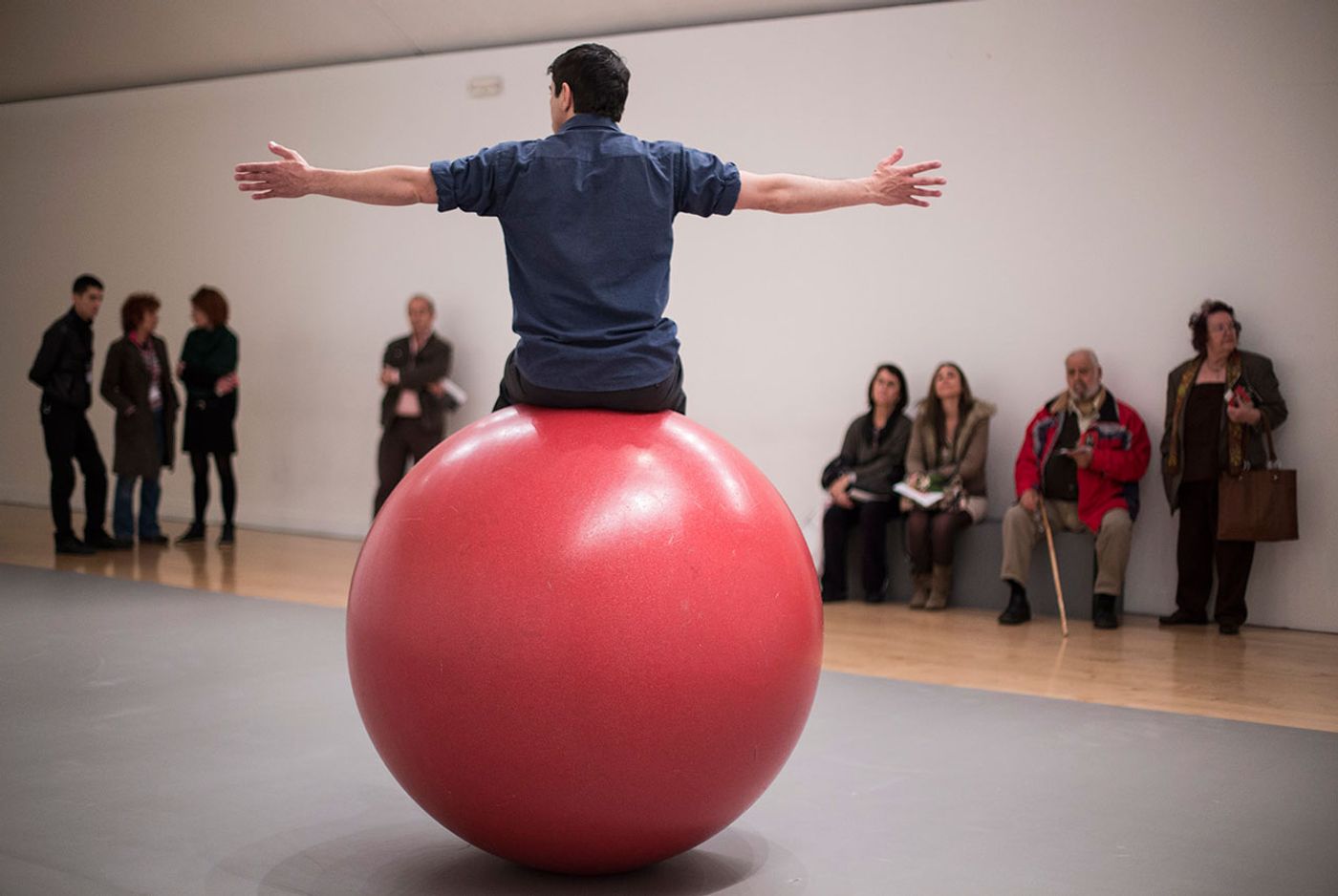
Dancer Giannis Karounis performs "Orbital", where he has to keep his balance on a big red ball for 8 hours. Part of AS ONE at the Benaki Museum, Athens, 2016. Photo © Natalia Tsoukalas.

Looking at Colours (Red). Photo by Peter Greig. Image Courtesy of Marina Abramović Institute and Kaldor Public Art Projects.

Portrait of Marina Abramovic and Dimitris Daskalopoulos. Photo by Marco Anelli © 2016.
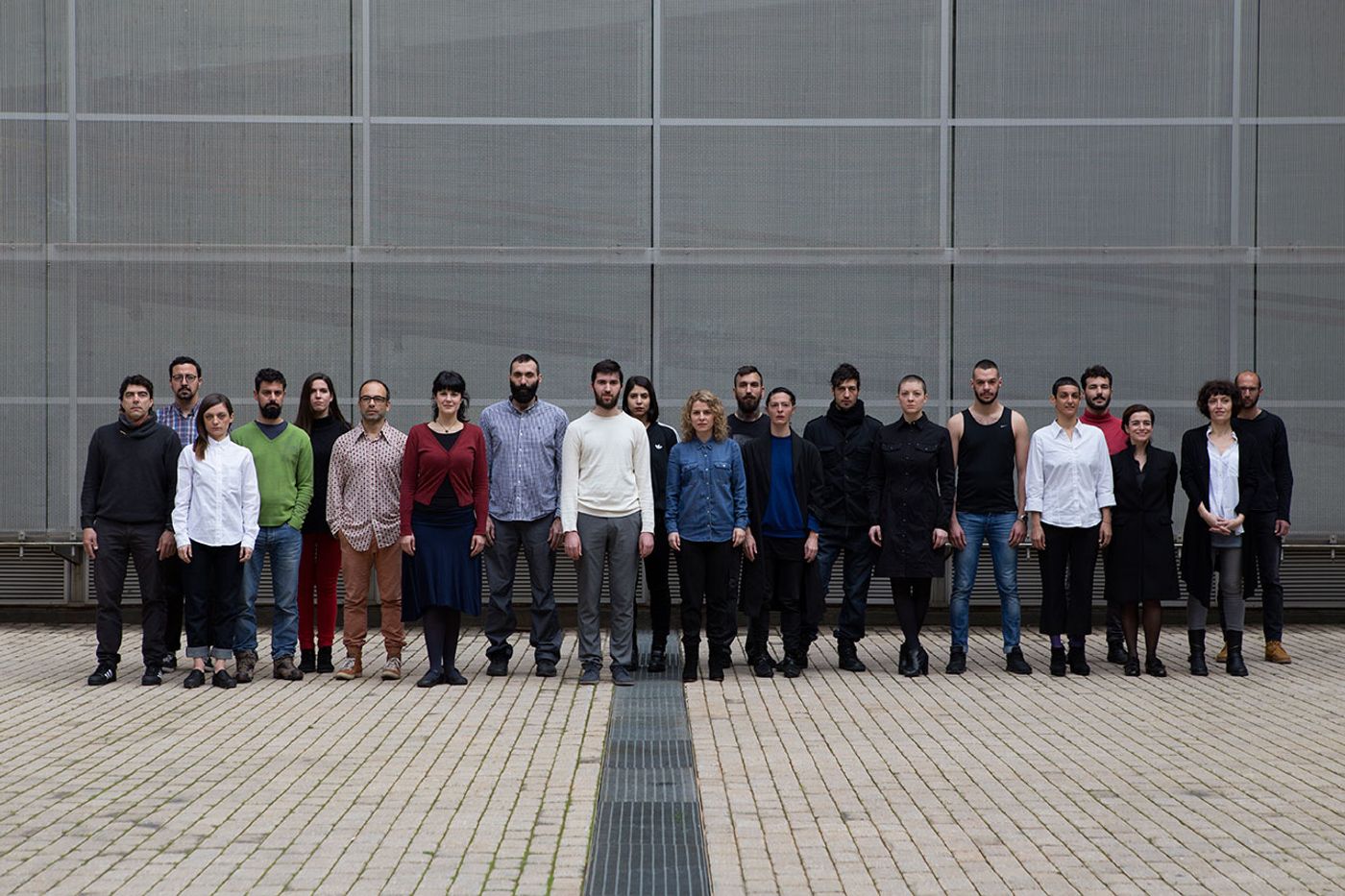
A group photo of artists participating in AS ONE. Photo © Natalia Tsoukalas.
Update 22 Apr 2016: The article was edited to mention that the exhibition design for AS ONE was done by architects Katerina Apostolou and Minna Colakis of Athens-based practice AK-A architects.
